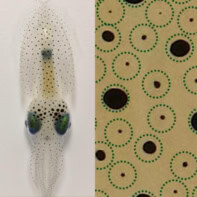
A jellyfish-like flying machine that hovers and stabilizes itself with no feedback control has been unveiled by researchers in the US. This degree of self-control is unique among such flapping-wing “ornithopters”, and its developers hope that the prototype could be developed into a toy that brings joy to young and old alike.
Existing ornithopters are based on the flight of birds and insects. Some of these flying robots flap their wings back and forth horizontally, turning the wings over at the end of each stroke. Others fly like dragonflies: the broad surfaces of the wings are parallel to the ground during the down stroke and turn to slice through the air on the up stroke.
This latest flyer was designed and built by Leif Ristroph and Stephen Childress of New York University (NYU). While the two applied mathematicians did not set out to create a jellyfish, similarities soon become apparent. “It was only well into construction that we realized we were making a flying jellyfish,” explains Ristroph.
Inherently unstable
Made of carbon-fibre loops and Mylar film, the ornithopter is the latest result in the drive to develop small autonomous flying machines for a variety of uses ranging from environmental monitoring to military reconnaissance. Making a functional ornithopter has proved to be a challenge because flapping flight is inherently unstable – a problem that has been overcome by flying insects. As a result, the robots must continuously manage their flight, sensing small perturbations and compensating for them with changes in wing motion. “There are a couple of prototypes of robots that are stable even though they move their wings as an insect does,” Ristroph says. “The catch is that these robots need to have large sails or tails added to damp out any body rotations, and this undermines maneuverability.”
The ornithopter is 10 cm wide and has a mass of 2.1 g. It flaps its four downward-pointing wings in and out, bobbing like a jellyfish as it ascends and hovers. In response to a gust of air, it flies sideways for a short distance before spontaneously righting itself. While Ristroph admits he does not completely understand why this self-correction occurs, he says it is associated with two observed effects. One is that the centre of mass of the ornithopter must be at a precise vertical position, which depends on the length of the wings. If the centre of mass is either too high or too low, then the flyer flips over.
The second observation is that the ornithopter employs drag and a low centre of gravity to right itself. When the flyer is tilted, its downward jet of air turns sideways slightly, which causes a translation – it goes sideways. Instead of flipping over, the ornithopter slows down under increased drag, which allows the centre of mass near the bottom to rotate downward, thus righting the device.
Paper cones and pyramids
The initial concept for the flyer came from wind-tunnel experiments done at the Applied Math Lab at NYU. Childress and colleagues were experimenting with the movements of small paper objects in a vertical, oscillating current of air. They discovered that hollow cones and pyramids were the simplest shapes that could generate lift and right themselves in the up-and-down air currents.
Having studied insect flight as a PhD candidate at Cornell University, Ristroph had a keen interest in flight stability when he joined the faculty of NYU. Inspired by the air-tunnel experiments, Ristroph and Childress began to translate the passive lift seen in the wind tunnel into active lift using up-and-down wing movements. Ristroph tried a variety of aircraft designs, as a mathematician turned trial-and-error engineer. He built about 10 prototypes before he had a machine that could fly. “I gained a lot of respect for good engineering,” he says.
Currently, the device cannot be steered and remains tethered by wires to its power source. Next steps for the team include devising a way for the flyer to carry its power source and incorporating a way to steer it. The researchers also plan to study the air currents around the wings to learn why flexing wings generate up to twice as much lift as rigid ones.
Ristroph expects the major advances to come from others, particularly “real engineers” and hobbyists. In the future, the aircraft might also reach the hands of children. “I would be very pleased if someone were able to develop this little guy into a toy,” he says.
The ornithopter is described in Journal of the Royal Society Interface.
- You can watch the flying jellyfish in action in the video below



